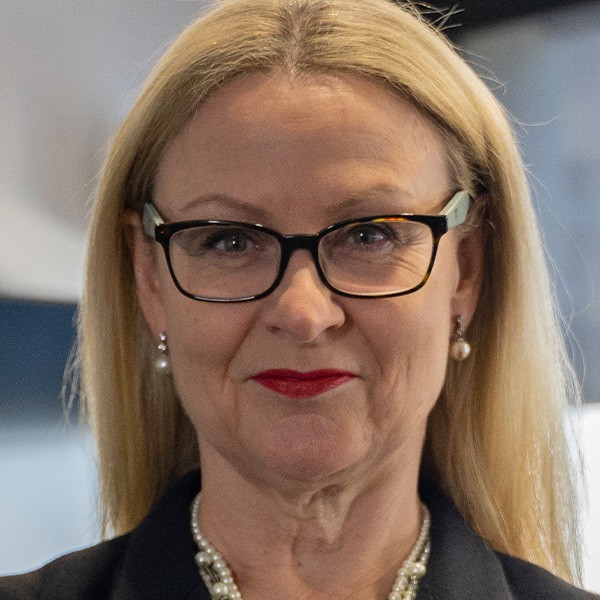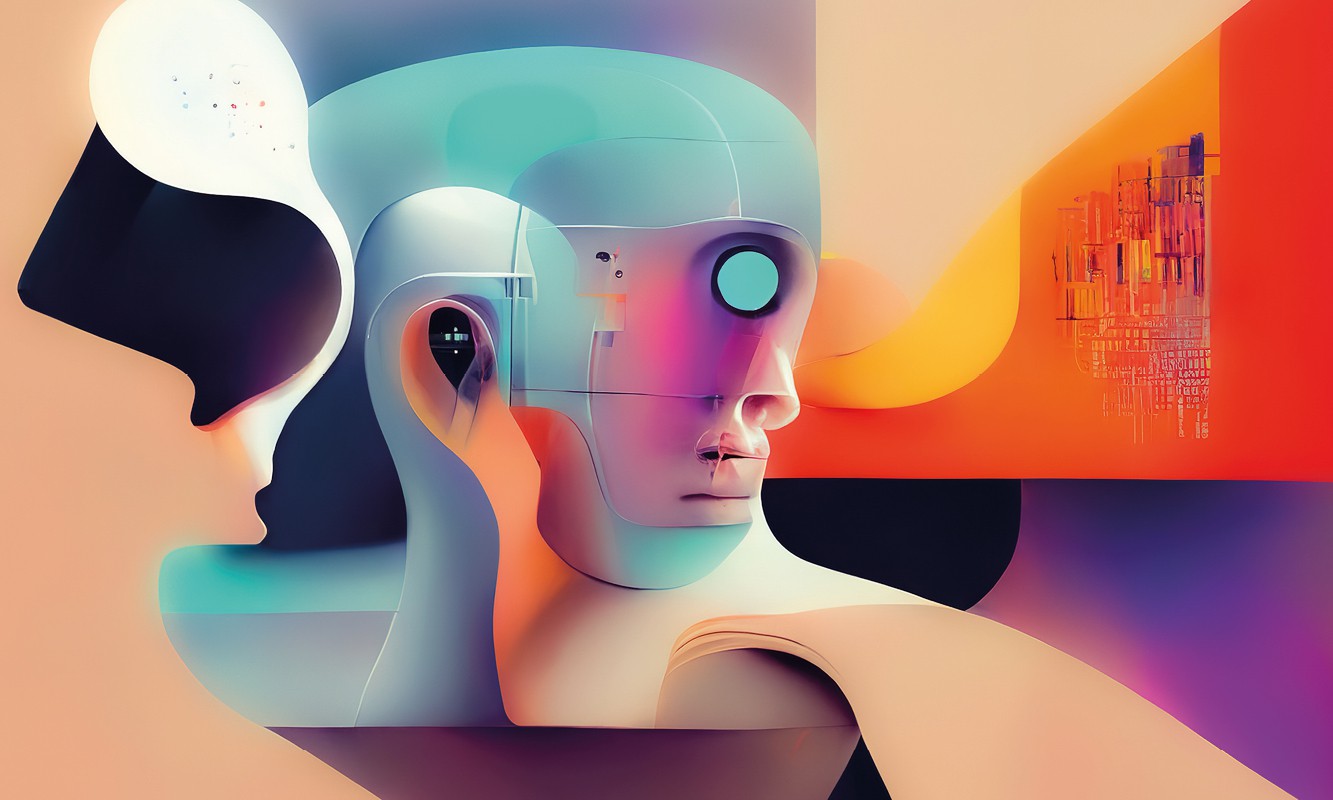In the wake of the pandemic, the increasing global focus on all things digital has rapidly advanced technologies like virtual and augmented reality, artificial intelligence, blockchain and cloud computing.
Such technologies are at the heart of the ‘Metaverse’, Mark Zuckerberg’s vision for a space merging the physical and virtual to create an enhanced world, launched last year.1
Digital assets called non-fungible tokens (NFTs) also straddle the real and digital, with the power to drive emerging Metaverse economies.
While the Metaverse is in its infancy, NFTs have been around since 2014 – although they have only recently risen to fame as a lucrative means of selling digital art. Around US$37 billion was transacted on NFT marketplaces in the five months from January to May this year.2
Both the Metaverse and NFTs are thus being hailed as the next revolution in digital business. However, the commercialisation of NFTs is increasingly posing challenges to the boundaries of intellectual property (IP) law, particularly copyright ownership.
Explainer: the Metaverse and NFTs
So, what exactly is the Metaverse? Put simply, the Metaverse is a virtual space “where you can buy things that do or do not actually exist, play games, and talk to virtual representations of real people”.3
Access to the Metaverse will depend on expensive, proprietary gadgets, so tech giants like Facebook, Apple and Google are investing heavily in building it. Depending on your perspective, the Metaverse could precipitate utopian or dystopian social outcomes.4
As for NFTs, these are a kind of digital property crafted with programming similar to cryptocurrency, enabled by blockchain technology. Blockchains are digital ledgers shared among computer networks, allowing a community of users to record transactions. Importantly, blockchains are secure – “tamper evident and tamper resistant”.5
NFTs are essentially digital files assigned to an owner on a blockchain (typically Ethereum),6 with their own unique digital signature. They can be minted from any copyright-protected or trademarked7 work, including art, digitised copies of real-world products,8 physical goods,9 and even Tweets, transforming them into digital collector’s items.10
Tokens are compatible with cryptocurrencies, but are a different type of asset. Unlike cryptocurrencies that are ‘fungible’ and can be exchanged for equal value, NFTs are ‘non-fungible’ – being unique or limited-run items, they cannot be exchanged for equal value. The highest single-purchaser/single-NFT sale to date reached $69.3 million.11
NFTs are therefore an ideal vehicle to drive the emerging digital economies in the Metaverse, where a crypto-wallet might carry digital assets like avatars, their clothing, animations, decorations and weapons.12
However, the World Intellectual Property Organisation (WIPO) recognises the difficulty of policing brands in the Metaverse, and the NFT market is already generating complaints from misled,13 defrauded or frustrated participants.14
This is partly because many NFT buyers lack clarity around what they are purchasing. Often, they do not receive copyright ownership of the associated original work, despite many NFTs having some connection to copyright works. As noted, an NFT is simply metadata associated with a work (identification of the visual/auditory asset, transaction history, etc), not the work itself or its underlying IP rights, like copyright.15
Where a NFT does assign copyright ownership, it can be dissected into percentages and transferred to multiple owners.16 If not, a limited or open edition format might be used, where the NFT operates like a certificate of ownership. One open edition recently sold to 28,983 collectors for $91,806,519.17
Thus, the issue of copyright ownership may be complex, and the question of infringement potentially difficult to prove.
Emerging copyright issues
In Australia, s35(2) of the Copyright Act 1968 (Cth) provides that the author of the works is the owner. Under s31(1)(b), the owner has the exclusive right to reproduce, publish or make public original works (like artwork). Copyright is infringed under s36(1) when an owner’s work is used by a another, without permission.
If permission is provided, generally a licence stipulates terms like permitted geographic location and use or exploitation of the work. Perhaps unsurprisingly given its relative infancy, there is no Australian case law on copyright infringement by digital assets. However, Treasury is presently developing more general regulations for secondary service providers of crypto assets.18
The problem for copyright owners is that NFTs are easily created without permission from the physical use of copyright-protected artistic works.
In a recent United States dispute, Miramax sued Quentin Tarantino for copyright infringement when he announced the sale of NFTs minted from his handwritten Pulp Fiction script. While Tarantino had reserved his screenplay publication rights, the contractual uncertainty around the scope of these rights was exacerbated by a confusion around the nature of NFTs.19
This confusion stems from the nature of NFTs as code on the blockchain – they typically include a ‘hash’ (cryptographic code) of a work, and a link to an internet address displaying it. The hash is not the work (for example, sound, image) and is not used to copy or display it.21
If Tarantino owns the right to publish his screenplay, and the NFTs do just that, Tarantino will not breach his Miramax contract. But Tarantino supporters go further and maintain Miramax misunderstands the nature of NFTs, which are not an infringing medium for distribution, but a mere record of ownership.21
On this argument, while the work is used to mint the NFT, the NFT itself is not a copy of the content so, technically, no infringement. If the NFT points to the copyright owner’s website displaying the work that, too, does not infringe.22
Indeed, some copyright experts suggest it is a misconception that buyers of NFTs will have any proprietary right to the copyrighted work,23 given anyone can mint an unofficial NFT, whether they own copyright or not. In fact, one IP expert has already created and sold his own Pulp Fiction NFT, making light of the Tarantino dispute.24
Given the large dollar values at stake, we will likely see more litigious activity. Hermes recently filed a suit against a Metaverse ‘buccaneer’ who minted a NFT replica of a Hermes’ Birkin bag – a ‘MetaBirkin’ – without permission, selling it at nearly US$1 million.25
Complicating the issue further is a new debate around whether the act of minting an NFT could itself be considered an original ‘digital artistic performance’.26 The argument maintains that minting NFTs connected to existing artwork is the “digital equivalent of Duchamp’s Fountain”, giving “new meaning to an existing object”27 – the conceptual choice of object constituting the artistic creation.
While this conversation is currently theoretical, it adds another layer to the discussion around copyright ownership and IP protection.
NFTS, smart contracts and licensing
The lack of policing in the Metaverse compounds copyright owners’ concerns,28 particularly given that there is no standard system to quickly confirm NFT creator legitimacy29 or the terms of any IP licence.
Currently, NFTs only provide proof of ownership over NFT metadata;30 the ‘anonymity features’ of blockchain technology makes it “difficult to verify who is the rightful creator or owner of copyright”,31 increasing the challenge in proving copyright infringement.
A potential solution may well lie in the NFT technology itself. All NFTs are programmable, minted with smart contracts,32 which is where the basic terms of sale are embedded.33 While smart contracts are technically just computer programs, in Australia they operate the same as written legal contracts for simple transfers of NFTs34 and are held to the same legal standards.35
Thus, NFT smart contracts could potentially embed licences to verify ownership and asset authenticity,36 and simplify commercialisation by connecting the provenance of copyright ownership and licensing to the digital data.37
Need for clarity
As technological spaces like the Metaverse continue to multiply and provide new opportunities for copyright works to be used as NFTs, the need for further regulatory clarity around copyright ownership and infringement is clear.
Without sufficient policing of NFTs, this technology has the potential to be more disruptive than beneficial. Clarity in licensing is a particularly pressing issue in the commercialisation of NFTs and protection of owners’ IP rights.
Utilising NFT smart contracts for licensing agreements presents one potential avenue worth pursuing38 while a global structure for policing NFTs in the Metaverse is developed, and the law’s typically slow march to provide regulatory and judicial guidance around yet another bleeding edge technology quickens its pace.
This article appears courtesy of the Queensland Law Society Privacy, Data, Technology and Intellectual Property Committee. Dr Amanda-Jane George is a senior lecturer at CQ University and a member of the committee. Stephanie Jones is a law student (CQ University), and Global Prevention Specialist at The A21 Campaign.
Glossary
Blockchain (technology): A digital and decentralised database that is publicly accessible.
Cryptocurrency: A form of digital currency or digital asset not governed or issued by any government authority (for example, Bitcoin).
Metaverse: An immersive, virtual world and augmented reality.
Non-fungible token (NFT): A unique digital identifier/digital asset which is recorded in a blockchain, that cannot be copied, changed or substituted. It is often used as an investment or to certify ownership or transactions.
Smart contract: A digital contract that is written as a program or code, stored on a blockchain. These are self-executing contracts, used for agreements.
Further reading:
Blockchain:
IBM ‘What is Blockchain Technology?’ (web page, 2022).
Cryptocurrency
MoneySmart, Government of Australia, ‘Cryptocurrencies: The risks of investing in crypto’ (web page, 2022).
Reserve Bank of Australia, ‘Digital Currencies: What are Cryptocurrencies?’ (web page, 2022)
Todd Ehret and Susannah Hammond, ‘Compendium – Cryptocurrency regulations by country’ (Thomson Reuters, 2021)
Metaverse
The Conversation, ‘What is the metaverse, and what can we do there?’ (web page, 23 March, 2022).
Non-fungible tokens (NFTs)
Andres Guadamuz, ‘Non-fungible tokens (NFTs) and copyright’ WIPO Magazine (University of Sussex, December 2021)
Anna Smyth and Rebecca Smith,‘IP Commercialisation in the Virtual World: Part 1, Non-Fungible-Tokens (‘NFTs’)’ Gilbert and Tobin (web page, 2022)
Merriam-Webster Inc., ‘Non-fungible tokens’ (web dictionary, 2022)
‘Non-fungible tokens (NFTs) and the Metaverse, Explained’, Getsmarter (blog post, 14 June 2022).
Robyn Conti and Johanna Leggatt, ‘What is an NFT? Non-fungible token explained’, Forbes Advisor (blog post, 19 July 2022)
Smart contracts
IBM, ‘What are smart contracts on blockchain?’(web page, 2022)
Footnotes
1 Kurt Wagner, ‘Zuckerberg says Facebook’s future lies in virtual ‘Metaverse’, Bloomberg (news, 29 July 2021) <bloomberg.com/news/articles/2021-07-29/mark-zuckerberg-explains-metaverse-vision-to-facebook-fb-investors-analysts> (Wagner). The term ‘Metaverse’ was coined by Neal Stephenson, in his novel Snow Crash (Bantam Books, 1992).
2 Robyn Conti and Johanna Leggatt, ‘What is an NFT? Non-fungible token explained’, Forbes Advisor (Blog Post, 19 July 2022) <forbes.com/advisor/au/investing/cryptocurrency/nft-non-fungible-token/> (Conti and Leggatt).
3 Jessa Crispin, ‘Move over, space. Tech billionaires have a new utopian boondoggle: the ‘metaverse’, The Guardian (online, 5 August 2021) <theguardian.com/commentisfree/2021/aug/05/move-over-space-tech-billionaires-have-a-new-utopian-boondoggle-the-metaverse> (Crispin).
4 Wagner (n1); Crispin (n3).
5 Dylan Yaga et al, ‘NISTIR 8202: Blockchain Technology Overview’, National Institute of Standards and Technology Report (October 2018), <arxiv.org/ftp/arxiv/papers/1906/1906.11078.pdf>; see also Conti and Leggatt (n2).
6 Anna Smyth and Rebecca Smith,‘IP Commercialisation in the Virtual World: Part 1, Non-Fungible-Tokens (NFTs)’ Gilbert and Tobin (Web Page, 2022) <gtlaw.com.au/knowledge/ip-commercialisation-virtual-world-part-1-non-fungible-tokens-nfts> (Smyth).
7 Sarah Dixon, ‘To the metaverse and beyond: considerations for Australia’s trademark owners’, Managing IP – Euromoney Institutional Investor PLC group (Blog Post, 25 January 2022) <managingip.com/article/b1wgh5z4n0f4q3/to-the-metaverse-and-beyond-considerations-for-australias-trademark-owners> (Dixon).
8 Smyth (n6) [4]; Conti and Leggatt (n2).
9 Andres Guadamuz, ‘Non-fungible tokens (NFTs) and copyright’, WIPO Magazine (University of Sussex, December 2021) [5] (Guadamuz).
10 Conti and Leggatt (n2).
11 Langston Thomas, ‘The 15 most expensive NFT sales of all time’, NFTNow, (Blog Post, 9 March 2022) <nftnow.com/features/most-expensive-nft-sales/>.
12 ‘Non-fungible tokens (NFTs) and the Metaverse, Explained’, Getsmarter (Blog Post, 14 June 2022) <getsmarter.com/blog/market-trends/non-fungible-tokens-nfts-and-the-metaverse-explained/>.
13 Smyth (n6) [5].
14 Kathryn Park, ‘Trademarks in the metaverse’ (WIPO Magazine, Principal, Strategic Trademark Initiatives, March 2022) [14] <wipo.int/wipo_magazine/en/2022/01/article_0006.html> (Park).
15 Smyth (n6).
16 Çağlayan Aksoy and Özkan Üner, Z, 2021. NFTs and copyright: challenges and opportunities. Journal of intellectual property law & practice, 16(10), pp.1115–1126, 1119 (Aksoy).
17 Langston Thomas, ‘Pak’s nifty gateway drop sets world record as largest ever sale by a living artist’ NFTNow (Blog Post, 7 December 2021) <nftnow.com/art/pak-merge-nifty-gateway-record-breaking-art-sale/>.
18 The Senate Select Committee on Australia as a Technology and Financial Centre, Parliament of Australia, ‘Crypto asset secondary service providers: Licensing and custody requirements: Final Report’ (2021) ix. The Treasury completed a preliminary public consultation in May 2022.
19 Smyth (n6) [14].
20 Kal Raustiala and Chris Sprigman, ‘Tarantino vs. Miramax – behind the FT ‘Pulp Fiction’ case, and who holds the advantage’ The Hollywood Reporter (Blog Pot, 24 November 2021). <hollywoodreporter.com/business/digital/tarantino-miramax-pulp-fiction-nft-1235052378/>.
21 Winston Cho, ‘Quentin Tarantino tries for an early court win in ‘Pulp Fiction’ NFT legal battle’ The Hollywood Reporter (Blog Post, 22 June 2022) <hollywoodreporter.com/business/digital/quentin-tarantino-nft-legal-battle-1235171174/>.
22 Aksoy (n16) 1122-1123.
23 Lynne Lewis et al., 2021 ‘Non-Fungible Tokens and Copyright Law’ 33(8) Intellectual Property & Technology Law Journal 18-19, 19 (Lewis).
24 Ibid. See Brian Frye’s Secret Pulp Fiction NFT on the OpenSea NFT trading website.
25 Park (n14) [12].
26 Guadamuz (n9) [21].
27 Aksoy (n16) 1121.
28 Sophie Goossens et al., ‘Protecting Intellectual Property in the Metaverse’ (2021) 33(9) Intellectual Property and Technology Law Journal, 11, 11.
29 Seyed Mojtaba Hosseini Bamakan et al, ‘Patents and intellectual property assets as non-fungible tokens; key technologies and challenges’ (Scientific reports, 2022-02-09, Vol.12 (1)), p.1-13, 6 (Bamakan et al).
30 Bamakan et al (n29) 6; Guadamuz (n9).
31 Lewis (n23) 19.
32 Smyth (n6).
33 Aksoy (n16) 1118.
34 Smyth (n6) [7].
35 Aksoy (n16) 1120.
36 Dixon (n7) 18.
37 Lewis (n23) 18.
38 Guadamuz (n9) [16]; Aksoy (n16) 1118.














Share this article